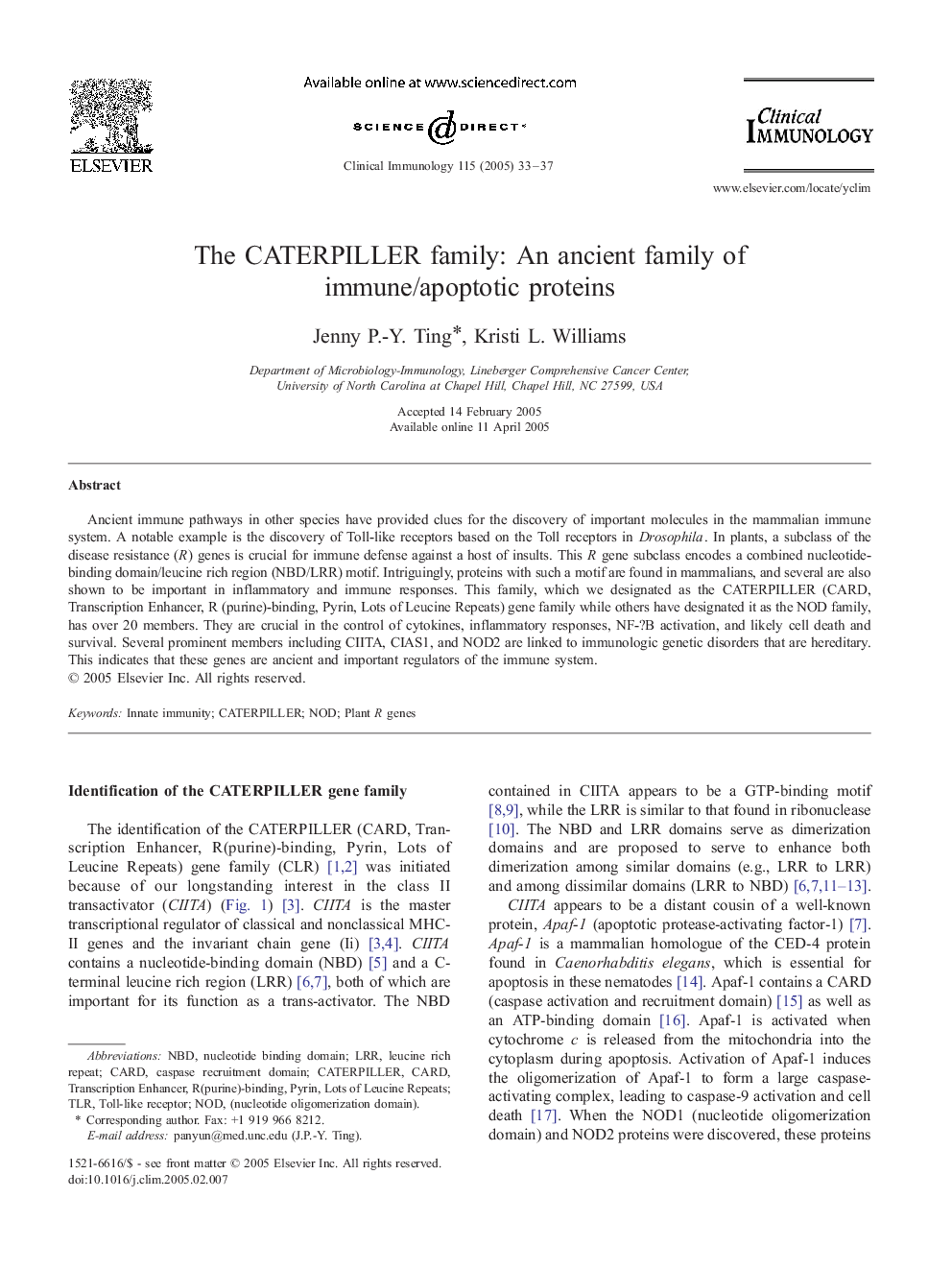| Article ID | Journal | Published Year | Pages | File Type |
|---|---|---|---|---|
| 9236583 | Clinical Immunology | 2005 | 5 Pages |
Abstract
Ancient immune pathways in other species have provided clues for the discovery of important molecules in the mammalian immune system. A notable example is the discovery of Toll-like receptors based on the Toll receptors in Drosophila. In plants, a subclass of the disease resistance (R) genes is crucial for immune defense against a host of insults. This R gene subclass encodes a combined nucleotide-binding domain/leucine rich region (NBD/LRR) motif. Intriguingly, proteins with such a motif are found in mammalians, and several are also shown to be important in inflammatory and immune responses. This family, which we designated as the CATERPILLER (CARD, Transcription Enhancer, R (purine)-binding, Pyrin, Lots of Leucine Repeats) gene family while others have designated it as the NOD family, has over 20 members. They are crucial in the control of cytokines, inflammatory responses, NF-κB activation, and likely cell death and survival. Several prominent members including CIITA, CIAS1, and NOD2 are linked to immunologic genetic disorders that are hereditary. This indicates that these genes are ancient and important regulators of the immune system.
Keywords
Related Topics
Life Sciences
Immunology and Microbiology
Immunology
Authors
Jenny P.-Y. Ting, Kristi L. Williams,
